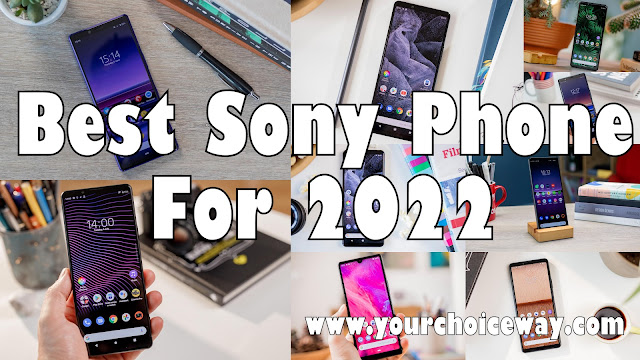No matter what your budget, we can recommend the best-value monitors as well as the best 4K and Full HD displays that you can connect to your PC or laptop
What's The Best Monitor You Can Buy?
Monitors come in a huge range of shapes, sizes and specs but no matter what you need one for, we have tested some of the best around. Whether you need a high-spec 4K main display or a cheap secondary monitor, we have you covered.
We've reviewed and ranks various monitors here and while some may be a few years old, don't worry, the technology doesn't move quickly like phones so they're still perfectly suitable for the job. If anything, they're more likely to be reduced in price and a bargain.
Best Monitors 2020
1. AOC AGON AG271QG
- $699.99
Excellent colours, a 165Hz refresh and native 1440p resolution makes this an attractive solution to those that want their Nvidia adaptive sync solution, and aren’t overly bothered by the cost.
2. Samsung Space Monitor
If you're desk is short of space this is one of the only monitors on the market that really solves the problem. However, it does so without offering a large amount of adjustment - there's only tilt here and no USB hub either which doesn't make sense.
If you're using wireless peripherals and the adjustment is ok for your desk, then the Space Monitor is excellent and is available at a decent amount below the RRP.
The panel itself is top-notch with the 4K VA technology providing a crisp and vivid image that will be suited to a wide range of tasks. Namely creative work but you could also use it for gaming.
3. AOC U2790PQU
It's well-made and looks good and offers solid colour accuracy to go with its crisp resolution. The majority of tasks will look great on it but it's not perfect.
For those needing it for higher end, demanding tasks, the contrast and uniformity being a little off might cause you to look elsewhere.
4. BenQ BL2780T
These types of monitors tend to be extremely dull but BenQ provides a good pinch of style in the mix here. There's good adjustment here, including portrait mode, and the power supply is neatly built-in avoiding an annoying brick.
If you don't need a resolution higher than Full HD then the BL2780T offers a excellent performance with various bits of eye comfort technology, good brightness and even 99% sRGB gamut.
5. BenQ EL2780U
If you’ve got a GPU that can handle the resolution and want to spend less than premium prices, then the BenQ EL2780U is a solid purchase.
6. ASUS Designo MZ27AQ
Asus has put some attractive options in the MZ27AQ that would work well for occasional gamers and weekend photographers alike. The Harman Kardon tweaked speakers are especially impressive, give how abysmal monitor audio can often be.
The asking price is a little on the high side. But as we’d expect from Asus, this is a high-quality device.
7. BenQ EW2770QZ
Easy on the eye but not the wallet, the EW2770QZ won’t be attracting many home users.
Where it excels is in a working environment, like an open plan office, where depending on the time of day and weather, viewing the screen can be an ophthalmic nightmare.
In that precise scenario, the EW2770QZ has no equal.
8. Dell UltraSharp U3419W
Dell's curved 34-inch offering is very expensive, but offers top-notch quality, accurate colours and a USB-C port for connecting the latest laptops.
If you don't need USB-C, the U3417W has the same screen, but is cheaper.
9. Dell S2718D
That high cost pushes the Dell S2718D into the market for things that look great on executive desks, but are rarely used to their full potential.
If you want something unapologetically chic to adorn yours then the S2718D is a taste of what screens will be like in the future, if we’ve not all switched to using augmented reality by then.
Your Buying Guide For The Best Monitors In 2020
The first decision is what size you want. Even 24in screens are cheap, or can be, so there's no point in going smaller unless you have to because of space limitations.
In many cases, the once thick surrounding bezel has been removed in favour of a tidy, nearly frameless design and modern backlight technology allows for much slimmer, neater displays. This is handy if you want a multi-monitor setup, where the gaps between the displays will be as thin as possible. Some models are also available in different colours.
The panel should be supportable at a comfortable height, which means you'll want a fully adjustable stand.
4K And Ultra HD Monitors
4K TVs have come down in price a lot, but they're still commanding a decent premium if you want a 4K monitor for your PC.
4K is the same as Ultra HD, as explained here. They pack in 3840x2160 pixels, which is four times more than a Full HD 1920x1080 screen.
Having this many pixels means you see more detail in photos (without zooming in) and you can watch 4K video on Netflix, Amazon and YouTube. If your PC is up to it, you can even run your games at this resolution, which makes for very sharp and realistic graphics.
Screen Types
Even if you're going for a budget screen, the performance of the display itself will be important. Perhaps the biggest deciding factor here will be your choice of panel technology - and it boils down to twisted-nematic (TN) panels versus everything else.
A TN panel costs less to make and can produce some decent performance results in terms of contrast ratio and the super-fast response times craved by serious gamers. They are, however, let down by restricted viewing angles, which means the brightness and colour of the picture can appear to shift if not viewed straight on. Any movement of your head is likely to make this apparent.
All the non-TN panels in this round-up use in-plane switching (IPS) or plane-line switching (PLS) panels, which typically offer a vastly superior viewing experience and are better suited for general-purpose use. An IPS/PLS screen is often favoured by photo- or video-editors, as they offer better colour accuracy.
Brightness rating is a manufacturers’ arms-race figure that can be largely ignored, so long as the result is above around 200 candela per square metre (cd/m2).
Much more important is contrast ratio, the difference between the very brightest and darkest images a screen can show. Around 500:1 is the starting point for believable imaging, though you should beware brands that promise the earth with millions:1 ratios.
Colour gamut, the spectral spread of reproduced colour within our perceptual limits, has been getting worse in modern displays, tumbling first with the introduction of LCD to replace glass-tube CRT sets. Then colour gamut shrunk again when traditional CCFL backlights were tossed out in favour of white LED technology.
Full coverage of the PC-standard called sRGB is a good first target for decent colour range; Adobe RGB is a more challenging spec that nevertheless gets closer to the vast range of colour the human eye can appreciate.
Colour accuracy meanwhile is about reproducing the exact hue as intended, rather than a rough approximation. Deviation from true colour fidelity is represented by a Delta E figure, lower numbers better. Close to or below 1.0 is a good achievement.
Response time is often quoted in the manufacturer’s specifications, another area for brand one-upmanship, but even for gamers there is little need to seek vanishingly low figures such as 1- or 2 millisecond (ms). The intrinsic lag of the monitor’s electronics is typically well in excess of 10ms, so the added time for liquid crystals to complete their transition as they turn on/off has become inconsequential.
Inputs
The monitors reviewed here all offer at least two inputs, and this will determine what sort of equipment you can hook up to your monitor. Some still have the ageing VGA connector, which should be avoided if at all possible, and instead look for digital inputs, such as DVI, HDMI and DisplayPort. The latest models offer USB-C which can charge a laptop at the same time as transmitting video to the monitor.
Multiple inputs allow you to connect more than one device at a time and switch between them using the monitor’s control buttons - you may want to connect your laptop and a gaming console or a Blu-ray player without having to unplug cables each time.
The most useful connector on monitors is either DisplayPort or HDMI, as they combine digital picture information with digital audio - allowing you to connect up both sound and vision with a single cable. DisplayPort is becoming more common on both Macs and Windows PCs, although you won't to find such a connector on home AV equipment. DisplayPort is also the best choice for 4K monitors or those with high refresh rates.
The DVI connector provides a high-quality digital video input, but doesn’t carry sound. Some monitors offer ‘dual-link DVI’, based on two DVI streams in one DVI connector. DVI remains popular with gamers who believe that this digital interface cable has less latency and so will better their reaction times.
If you have an Android phone or tablet, you might want to look for an HDMI port with MHL support, but that's only if you want to mirror your phone's screen on the monitor.
👉👇You May Also Like👇👌
View the original article here

























0 comments:
Post a Comment